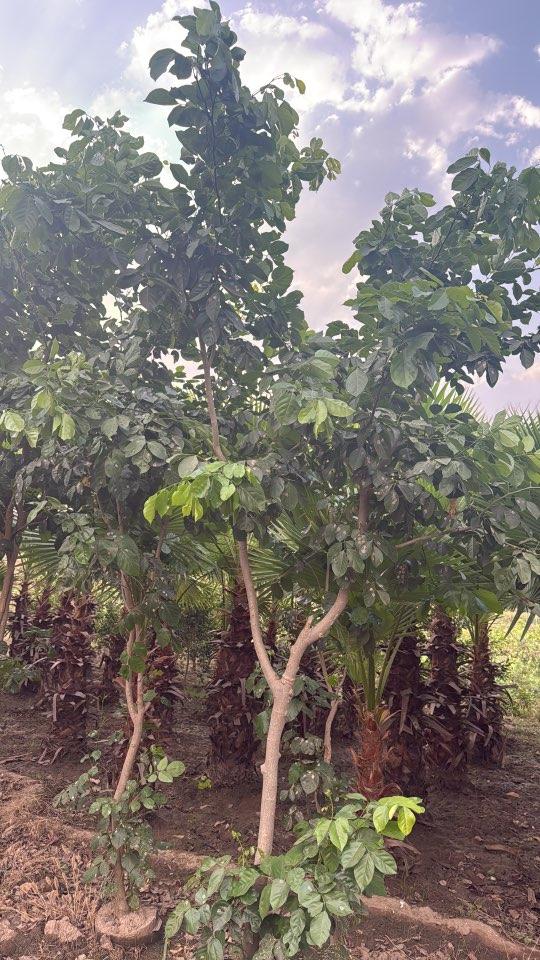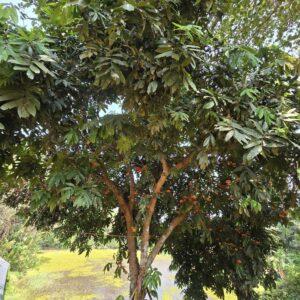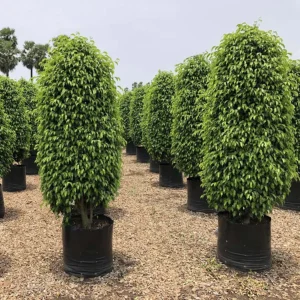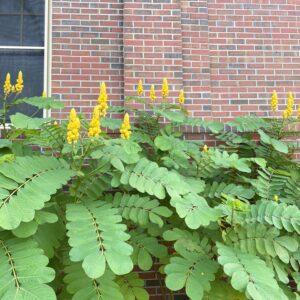Sukhchain Tree🌳🌿 Nature’s Gift for Shade, Soil & Sustainability
The Sukhchain Tree, known scientifically as Pongamia pinnata, is a medium to large-sized deciduous tree native to India, Pakistan, Southeast Asia, and parts of Australia. In Pakistan, it’s commonly called Sukhchain, valued for its dense shade, ornamental value, medicinal properties, and soil-enriching ability.
Its beauty, combined with drought resistance and fast growth, makes it a common sight along roadsides, parks, schools, and farms. It also plays a major role in soil conservation, nitrogen fixation, and sustainable energy as its seeds produce a high-yield biofuel oil.
🌿 Botanical Details
Scientific Name: Pongamia pinnata (also known as Millettia pinnata)
Common Names: Sukhchain, Karanj, Indian Beech
Family: Fabaceae (Legume family)
Type: Deciduous, nitrogen-fixing tree
Height: 10–20 meters
Canopy Spread: 8–15 meters
Leaves: Compound, glossy green, 5–7 leaflets per stem
Flowers: Small, pinkish-white to lavender, mildly fragrant
Bloom Time: Spring to early summer
Fruits: Flat pods containing 1–2 seeds
Lifespan: 40–80 years
Growth Rate: Fast (can grow 2–3 feet/year when young)
☀️ Light and Climate Requirements
Sunlight:
Prefers full sun (6–8 hours/day)
Tolerates light shade
Temperature:
Thrives in 20°C to 40°C
Tolerates up to 45°C
Mild frost tolerant (young plants need protection)
Humidity:
Grows well in humid to semi-arid conditions
🌞 Ideal for tropical and subtropical climates, such as those in Punjab and Sindh.
💧 Watering Needs
Young Trees (1–2 years):
Water 2–3 times/week in dry months
Keep soil moist but avoid overwatering
Mature Trees:
Highly drought-tolerant
Water every 10–14 days in dry spells
Survives well on natural rainfall in most regions
⚠️ Do not plant in areas with prolonged waterlogging.
🌱 Soil Requirements
Soil Type:
Prefers well-drained sandy loam or alluvial soils
Also tolerates saline, alkaline, and degraded soils
pH Range: 6.0–8.5
Soil Benefits: Nitrogen fixer — improves fertility for nearby plants
🌿 Ideal for reclaiming barren lands and soil restoration.
🌾 Fertilizer and Mulching
Fertilizer Needs:
Minimal input required
Add compost or organic manure once a year during spring
Optional use of NPK (10-10-10) once in early growing season
Mulching:
Apply leaf mulch or dry grass around the base to retain moisture and suppress weeds
🌱 Natural self-sustainability makes it excellent for low-maintenance landscaping.
✂️ Pruning and Maintenance
Initial pruning:
Shape the tree in early years to create a strong central trunk
Remove lower branches and suckers
Ongoing maintenance:
Prune dead, weak, or crossing branches annually
Can be trimmed into a shade tree or windbreak hedge
✂️ Light pruning keeps the canopy neat and supports airflow.
🌿 Propagation Methods
Seeds (main method):
Collect mature pods, dry and extract seeds
Soak seeds for 24 hours before sowing
Germination takes 1–2 weeks
Cuttings:
Semi-hardwood cuttings root well with hormone support
🌱 Transplant saplings when they are 10–12 inches tall.
🐛 Pests and Diseases
Pest Resistance: Generally resistant to major pests
Occasional issues:
Aphids or mealybugs (young plants)
Leaf spot or fungal rot in overwatered or humid environments
🛡️ Neem oil or organic soap sprays work well for minor infestations.
🌿 Benefits and Uses
Shade: Large canopy offers excellent shade for roadsides and courtyards
Ornamental: Attractive shape and fragrant flowers
Soil improvement: Nitrogen fixation boosts fertility
Windbreak and Erosion Control: Dense root system prevents soil loss
Medicinal: Oil and extracts used in Ayurveda for skin diseases and inflammation
Fuel: Seeds produce non-edible oil used for biodiesel production
🌍 A multipurpose tree used in reforestation, eco-restoration, and green urban projects.
✅ Conclusion
The Sukhchain Tree (Pongamia pinnata) is a true multi-benefit tree — it provides shade, soil restoration, biofuel potential, and beauty with very low maintenance. Whether you’re planting it along a roadside, in a park, or for reforestation, this tree offers a sustainable solution to ecological and urban challenges. It’s an ideal choice for climate-resilient, low-water, and long-lasting landscapes.”





Reviews
There are no reviews yet.